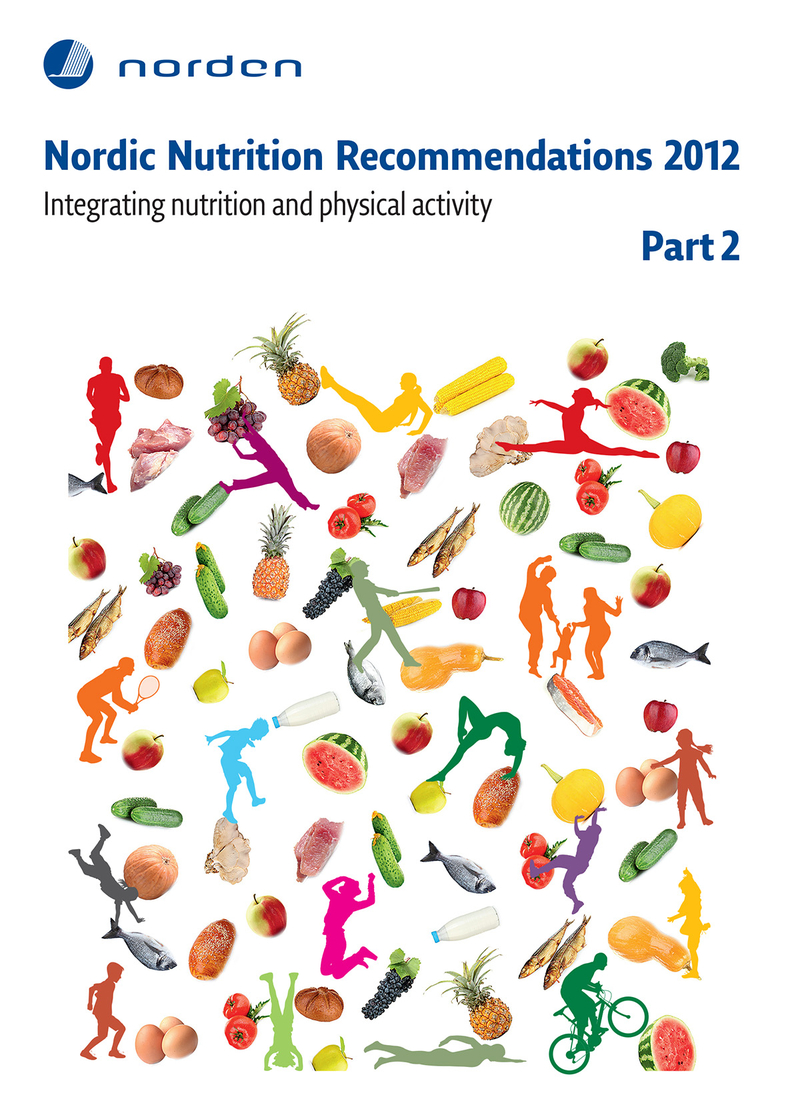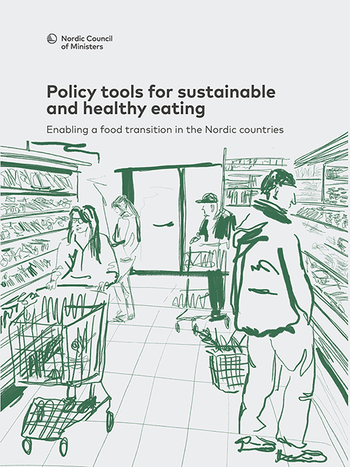Nordic Nutrition Recommendations 2012. Part 2
Energy, fat and fatty acids, carbohydrates, protein, alcohol, fluid and water balance and physical activity

Information
Publish date
Abstract
Components of daily energy expenditureDefinitions of energy requirementThe basic principle behind the formulation of energy requirement reference values is energy balance, i.e. the physiological state in which daily energy intake equals energy expenditure and both body weight and energy content (defined by body composition) are constant. For some people, especially those who are over- or underweight, the recommended energy intake might be lower or higher than energy expenditure for a prescribed time period, but long-term energy balance is the ultimate goal even in treatment of undernourishment and obesity. Therefore, the NNR defines the energy requirement in adults as “the energy intake needed to cover energy expenditure in individuals with body weight, body composition and physical activity compatible with good health. In addition, energy requirement is affected by the energy needed for growth in children, for deposition of tissues during pregnancy and for milk production during lactation” (1). However, because body energy stores are very large (at least 30 times the daily energy energy expenditure, there is no need for energy intake and energy expenditure to be equal over short periods of around 1 to 4 days (2).The daily energy expenditure can be divided into the following components:•Basal (or resting) energy expenditure (BEE or REE)•Diet-induced thermogenesis (DIT)•Energy expenditure caused by physical activityEnergy expenditure is measured in kJ (1000 kJ = 1 MJ) per time unit (usually MJ/d). One kilojoule equals 0.24 kcal (or 1 kcal = 4.184 kJ), a unit that is still often used in the literature.On average, daily energy expenditure is higher in men than in women but the difference disappears after adjustment for the difference in body size and body composition between the sexes. Very cold or hot environments,genetic differences, hormonal status (e.g. serum concentrations ofthyroid and growth hormones), sympathetic nerve activity, psychologicalstate, pharmacological agents, and several disease states have been shownto increase or decrease energy expenditure, mainly by affecting REE (3, 4).
Publication number
2014:004




